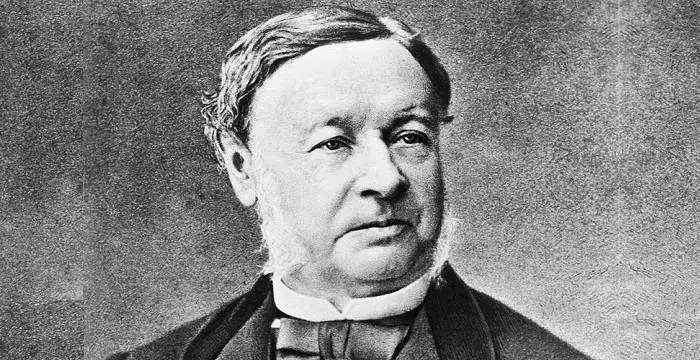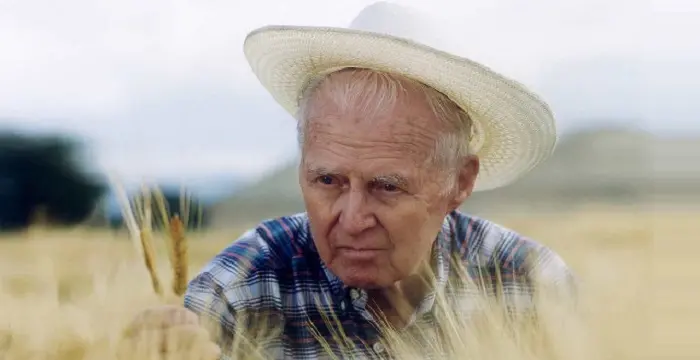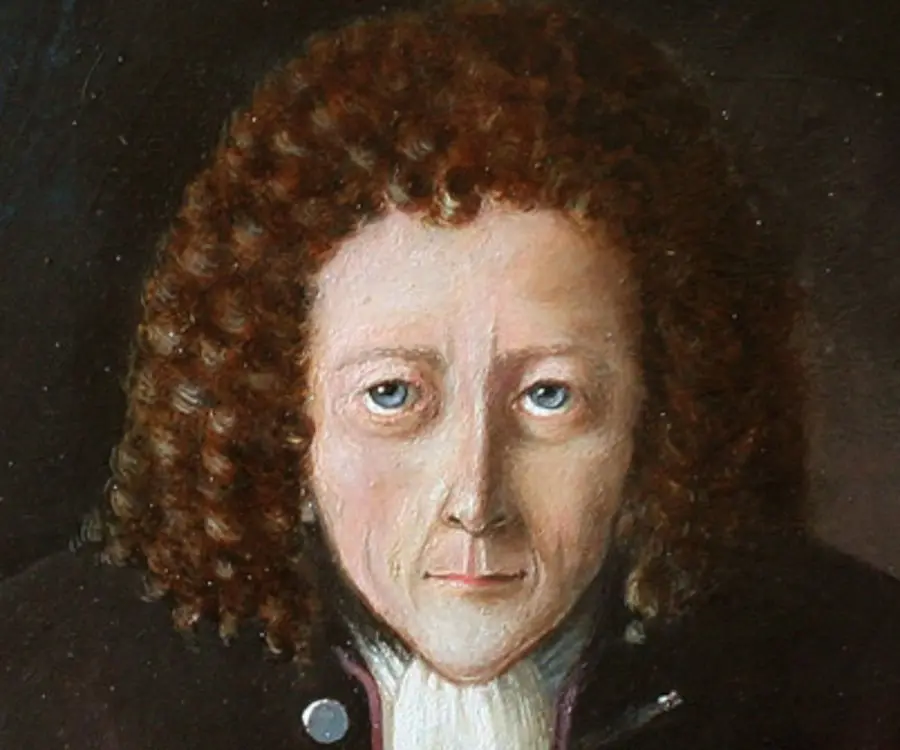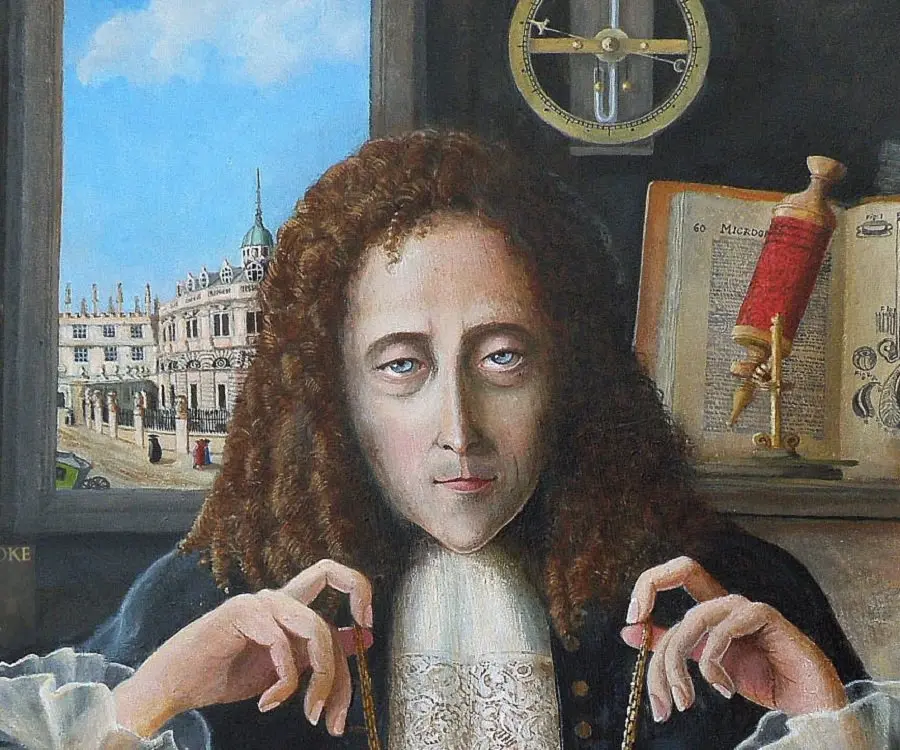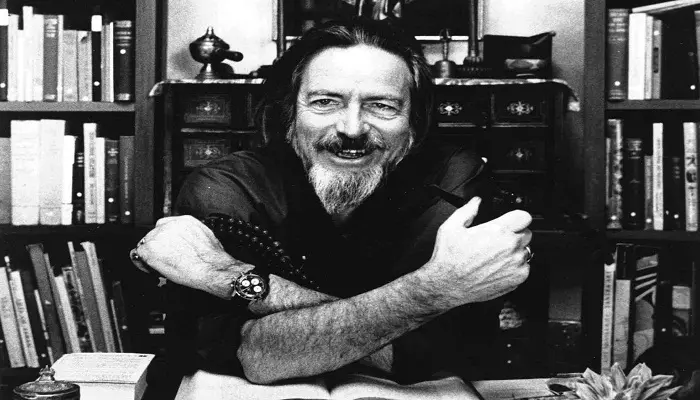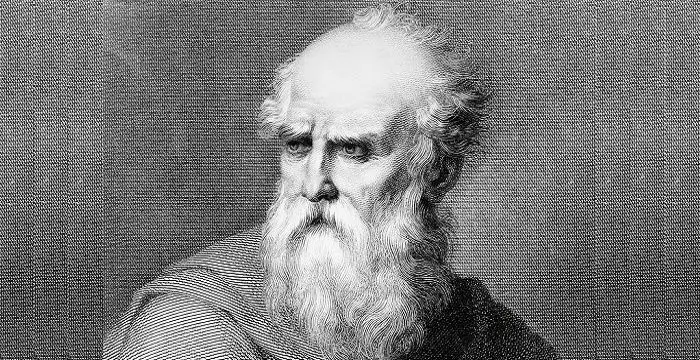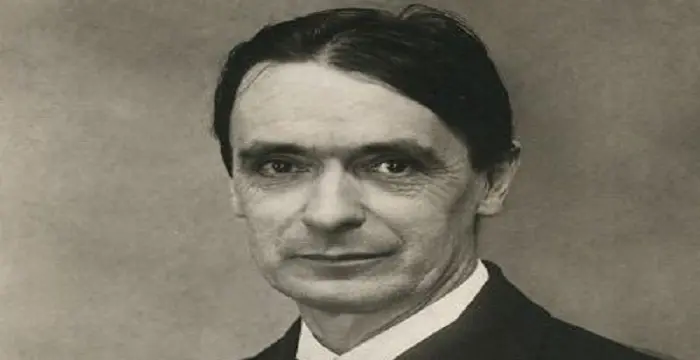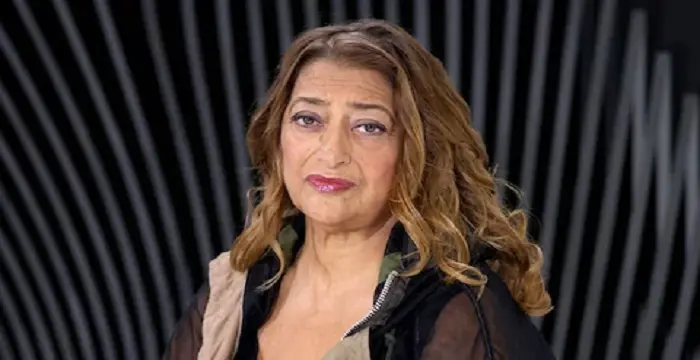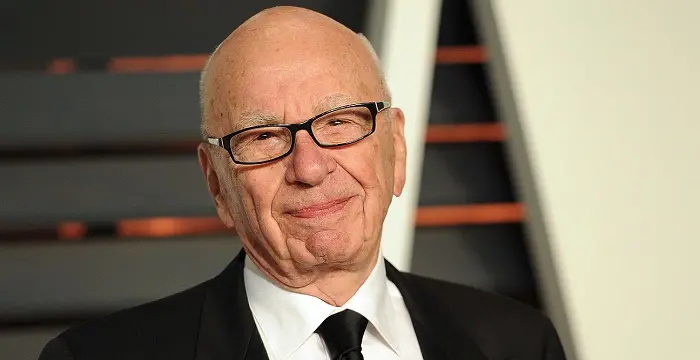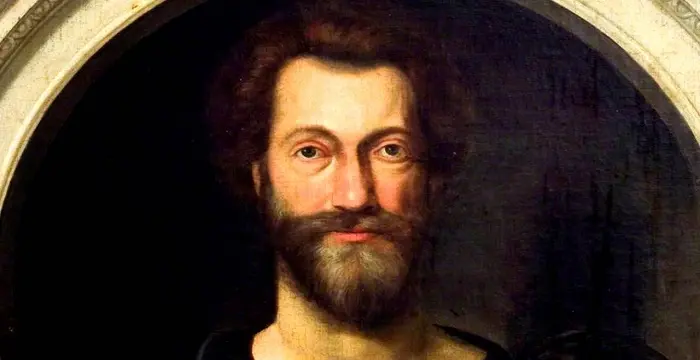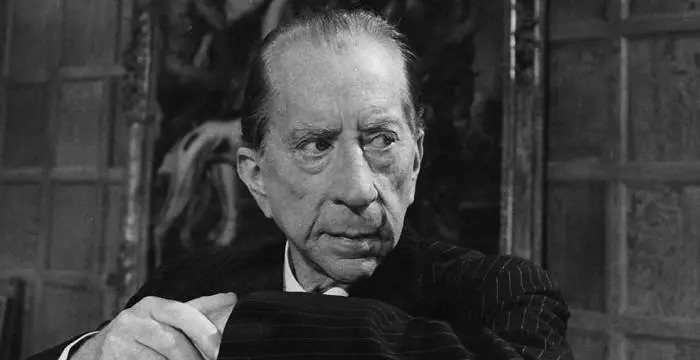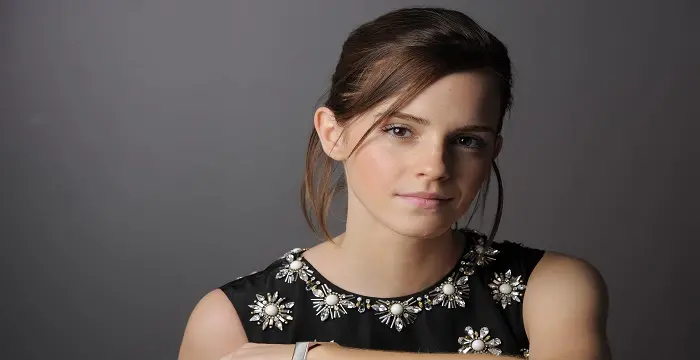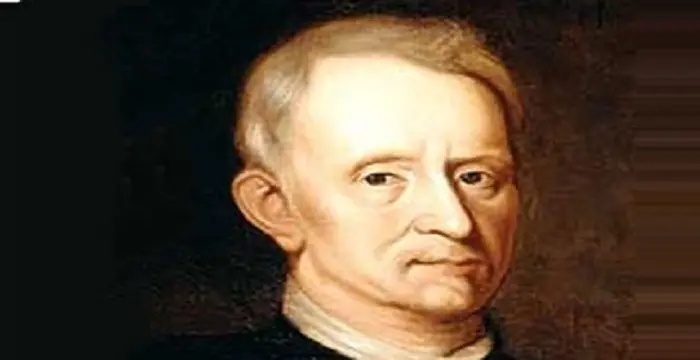
Robert Hooke - Architects, Career and Family
Robert Hooke's Personal Details
Robert Hooke FRS was a 17th century English scientist, architect and polymath
| Information | Detail |
|---|---|
| Birthday | July 28, 1635 |
| Died on | March 3, 1703 |
| Nationality | British |
| Famous | Oxford University, Architects, Philosophers, Astronomers, Physicists, Biologists |
| Known as | โรเบิร์ต ฮุค th, Гук, Роберт ru, 罗伯特·胡克 zh-TW |
| Universities |
|
| Notable Alumnis |
|
| Discoveries / Inventions |
|
| Birth Place | Freshwater, Isle of Wight |
| Religion | Anglicanism |
| Gender | Male |
| Sun Sign | Leo |
| Born in | Freshwater, Isle of Wight |
| Famous as | Philosopher |
| Died at Age | 67 |
// Famous Biologists
Juliane Koepcke
Juliane Koepcke is a German-Peruvian biologist, who was the lone survivor among the 92 passengers and crew of the ill-fated LANSA Flight 508 that crashed in the Peruvian rainforest on 24 December 1971. Know more about her life in this biography.
Theodor Schwann
Theodor Schwann was a German physiologist who discovered the Schwann cells in the peripheral nervous system. This biography of Theodor Schwann provides detailed information about his childhood, life, achievements, works & timeline.
Norman Borlaug
Norman Borlaug was an American biologist known as the “Father of the Green Revolution”. This biography of Norman Borlaug provides detailed information about his childhood, life, achievements, works & timeline.
Robert Hooke's photo
Who is Robert Hooke?
Robert Hooke FRS (Fellow of the Royal Society) was an English scientist, architect and polymath. His name is somewhat obscure and no portrait of him survives today, partly due to his enmity with his more famous and influential colleague, Sir Isaac Newton. But still he is credited for the major contributions he made to science by way of his experimental and theoretical work in the 17th century and in re-building London after the Great Fire in 1666. Always prone to ill health, he never let it hinder his interests, which knew no bounds. His experiments and studies covered a vast range of subjects like physics, astronomy, chemistry, biology, geology, architecture and naval technology. His prowess enabled him to work alongside scientists such as Christian Huygens, Antony van Leeuwenhoek, Christopher Wren, Robert Boyle and Sir Isaac Newton. He discovered the law of elasticity, which is now famously known as Hooke’s law. He built a compound microscope and used it to observe the smallest, previously hidden details of the natural world. He also concluded that fossils had once been living creatures and stated that gravity applied to all celestial bodies. But for all contributions made to science and humanity, he never received the recognition he truly deserved
// Famous Philosophers
Martin Buber
One of the greatest philosophers to have ever walked on earth, Martin Buber contributions to philosophy is a long-standing one. Explore all about his profile, childhood, life and timeline here.
Lao Tzu (Laozi)
Lao Tzu was a legendary Chinese philosopher who wrote the important “Daodejing”. This biography profiles his childhood, life, career, achievements and timeline.
Alan Watts
Alan Watts was a famous British philosopher known for his Zen teachings and interpretations of Eastern philosophy. Read more about this great philosopher in the following article.
Childhood & Early Life
Robert Hooke was born on 28 July 1635 in Freshwater, England, to John Hooke and Cecily Gyles. His father was a priest at the Church of England and the curate of the Freshwater's Church of All Saints. Robert had three siblings.
He received most of his education at home because of his continual frail health. But he impressed his father with his quick learning, drawing and painting skills and adeptness in making mechanical models.
His father passed away in 1648 and left him an inheritance of £40. With this he travelled to London and acquired an art apprenticeship under Peter Lely and Samuel Cowper. But he left the apprenticeship soon and went to the Westminster School to study under Dr Richard Busby. He studied Greek, Latin, mechanics and mathematics.
Career
In 1655, Robert Hooke became an assistant to the famous scientist Robert Boyle and worked in this capacity till 1662. He helped in the construction and operation of Boyle's air-pump.
He discovered the law of elasticity which eventually came to be known as Hooke’s Law. He described this law in an anagram 'ceiiinosssttuv' in 1660 and gave its solution in 1678.
In 1660, the Royal Society—the oldest national scientific society in the world—was formed by 12 men at the Gresham College. Some of them were Robert Boyle, Christopher Wren, John Wilkins, Sir Robert Moray and Viscount Brouncker. In 1662, on Sir Moray's proposal and with Boyle's support Hooke was named as the curator of the society. He became a fellow of the society in 1663.
In 1664 he succeeded Arthur Dacres as the professor of Geometry at the Gresham College.
In 1665 he published the book, ‘Micrographia’, in which he documented the observations he had made through various lenses of a microscope. It is considered to be one of the most important scientific books ever written.
In the 1670s he postulated that gravitational pull applies to all celestial bodies. He stated that it decreases with distance and in its absence the body would tend to move in a straight line. But he did not give any evidence to prove this.
He made a tremendous contribution to time keeping by improving pendulum clocks. He invented the anchor escapement, a cog which gave a small push per pendulum swing and also moved the hands of the clock forward. For pocket watches, he created the balance-spring.
After observing the microscopic structure of the bark of a cork tree, Hooke coined the term 'cell' for describing biological organisms, named so due to its resemblance to cells inhabited by Christian monks in a monastery.
He postulated that combustion needed a specific component of air and the same applied to respiration also. Experts believe that had he ventured further in these experiments, he would have discovered oxygen.
He stated that fossilised objects were the remains of living things that had been soaked in petrifying water laden with minerals and that they were important clues to the past history of life on earth. He even believed that some of them might belong to extinct species as well.
In astronomy, Robert Hooke studied the Pleiades star cluster, the craters on the moon, rings of Saturn and the double-star system, Gamma Arietis.
In 1682, he proposed a remarkable mechanistic model of the human memory which addressed the components of encoding, memory capacity, repetition, retrieval and forgetting.
He was also an architect who served as the Surveyor of London city. After the Great Fire in 1666, he helped to rebuild the city and co-designed the Monument of the Fire, the Royal Greenwich Observatory, Montagu House, Bethlem Royal Hospital, Royal College of Physicians, Ragley Hall, Ramsbury Manor, Buckinghamshire and the St Mary Magdalene church.
Major Works
Robert Hooke is best known for propounding the law of elasticity which bears his name—Hooke’s law. He first stated the law as a Latin anagram in 1660 and published its solution in 1678. This law is extensively used in all branches of science and engineering, and is the foundation of many disciplines such as seismology, molecular mechanics and acoustics.
He is also known for the observations he made while using a microscope. In his book 'Micrographia', published in 1665, he documented experiments that he had made with a microscope. In this path-breaking study, he coined the term "cell" while explaining the structure of cork.
Awards & Achievements
Robert Hooke received the degree of "Doctor of Physic" in 1691.
Personal Life & Legacy
He suffered from several ailments in the last years of his life. He died in London on 3 March 1703 and was buried at St Helen's Bishopsgate. He was very wealthy at the time of his death.
Throughout history he is mentioned as a distrusting, jealous, melancholic and despicable human. But the discovery of his personal diary revealed his emotional side.
// Famous Architects
Vitruvius
Vitruvius was a Roman architect, author, and military engineer during the 1st century BC. Check out this biography to know about his childhood, family life, achievements and fun facts about his life.
Rudolf Steiner
Rudolf Steiner introduced groundbreaking ideas in realms of spirituality, art, education and agriculture. Check out this biography to know about his childhood, family life, achievements and other facts related to his life.
Zaha Hadid
The famous Iraqi-British architect Zaha Hadid is known for her designs of the ‘Rosenthal Center for Contemporary Art’ and ‘Heydar Aliyev Center’. To know more about her childhood, profile, career and timeline read on.
Robert Hooke biography timelines
- // 28th Jul 1635Robert Hooke was born on 28 July 1635 in Freshwater, England, to John Hooke and Cecily Gyles. His father was a priest at the Church of England and the curate of the Freshwater's Church of All Saints. Robert had three siblings.
- // 1648His father passed away in 1648 and left him an inheritance of £40. With this he travelled to London and acquired an art apprenticeship under Peter Lely and Samuel Cowper. But he left the apprenticeship soon and went to the Westminster School to study under Dr Richard Busby. He studied Greek, Latin, mechanics and mathematics.
- // 1655 To 1662In 1655, Robert Hooke became an assistant to the famous scientist Robert Boyle and worked in this capacity till 1662. He helped in the construction and operation of Boyle's air-pump.
- // 1660 To 1678He discovered the law of elasticity which eventually came to be known as Hooke’s Law. He described this law in an anagram 'ceiiinosssttuv' in 1660 and gave its solution in 1678.
- // 1660 To 1662In 1660, the Royal Society—the oldest national scientific society in the world—was formed by 12 men at the Gresham College. Some of them were Robert Boyle, Christopher Wren, John Wilkins, Sir Robert Moray and Viscount Brouncker. In 1662, on Sir Moray's proposal and with Boyle's support Hooke was named as the curator of the society. He became a fellow of the society in 1663.
- // 1660 To 1678Robert Hooke is best known for propounding the law of elasticity which bears his name—Hooke’s law. He first stated the law as a Latin anagram in 1660 and published its solution in 1678. This law is extensively used in all branches of science and engineering, and is the foundation of many disciplines such as seismology, molecular mechanics and acoustics.
- // 1664In 1664 he succeeded Arthur Dacres as the professor of Geometry at the Gresham College.
- // 1665In 1665 he published the book, ‘Micrographia’, in which he documented the observations he had made through various lenses of a microscope. It is considered to be one of the most important scientific books ever written.
- // 1665He is also known for the observations he made while using a microscope. In his book 'Micrographia', published in 1665, he documented experiments that he had made with a microscope. In this path-breaking study, he coined the term "cell" while explaining the structure of cork.
- // 1666He was also an architect who served as the Surveyor of London city. After the Great Fire in 1666, he helped to rebuild the city and co-designed the Monument of the Fire, the Royal Greenwich Observatory, Montagu House, Bethlem Royal Hospital, Royal College of Physicians, Ragley Hall, Ramsbury Manor, Buckinghamshire and the St Mary Magdalene church.
- // 1682In 1682, he proposed a remarkable mechanistic model of the human memory which addressed the components of encoding, memory capacity, repetition, retrieval and forgetting.
- // 1691Robert Hooke received the degree of "Doctor of Physic" in 1691.
- // 3rd Mar 1703He suffered from several ailments in the last years of his life. He died in London on 3 March 1703 and was buried at St Helen's Bishopsgate. He was very wealthy at the time of his death.
// Famous Oxford University
Rupert Murdoch
Rupert Murdoch is a renowned Australian business magnate famous for his establishment, ‘News Corporation’ in the US. Read on for detailed information about his childhood, profile, career and timeline
John Donne
John Donne was a famous English poet, satirist, lawyer and priest of his time. Check out this biography to know about his childhood, family life, achievements and other facts related to his life.
Michael York
Michael York is a famous English actor who has enjoyed a busy and varied career in both, television and film. Explore this biography to learn more about his profile, childhood, life and timeline.
J. Paul Getty
J. Paul Getty was an American billionaire businessman and president of the Getty Oil Company. This biography offers detailed information about his childhood, life, career and timeline.
Emma Watson
Emma Watson is a British actress and model, best-known for her role as ‘Hermione Granger’ in the Harry Potter series. Explore this biography to learn more about her profile, childhood, life and timeline.
Rowan Douglas Williams
Rowan Douglas Williams is an Anglican bishop, poet and theologian. This article traces his childhood, life achievements, works & timeline.
Robert Hooke's FAQ
What is Robert Hooke birthday?
Robert Hooke was born at 1635-07-28
When was Robert Hooke died?
Robert Hooke was died at 1703-03-03
Where was Robert Hooke died?
Robert Hooke was died in London
Which age was Robert Hooke died?
Robert Hooke was died at age 67
Where is Robert Hooke's birth place?
Robert Hooke was born in Freshwater, Isle of Wight
What is Robert Hooke nationalities?
Robert Hooke's nationalities is British
What was Robert Hooke universities?
Robert Hooke studied at Oxford University, Christ Church, Oxford, Westminster School, University of Oxford, Wadham College, Oxford
What was Robert Hooke notable alumnis?
Robert Hooke's notable alumnis is Oxford University
What is Robert Hooke's inventions/discoveries?
Balance Wheel, Diaphragm, Universal Joint was invented (or discovered) by Robert Hooke
What is Robert Hooke's religion?
Robert Hooke's religion is Anglicanism
What is Robert Hooke's sun sign?
Robert Hooke is Leo
How famous is Robert Hooke?
Robert Hooke is famouse as Philosopher

